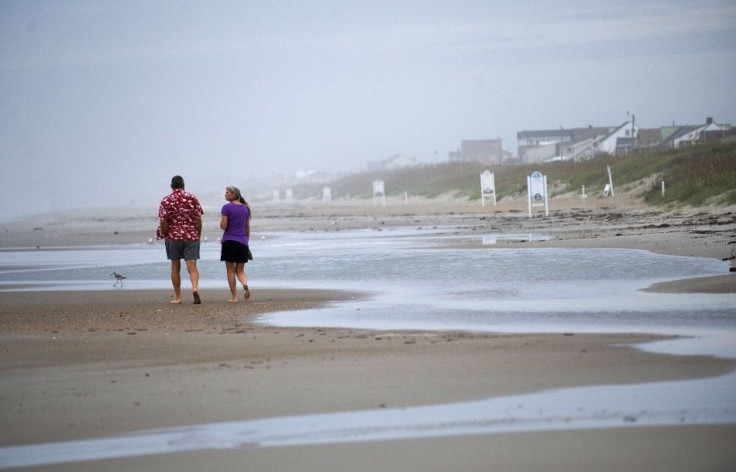Hurricane Irene Path: Claims First Casualties, Eight Injured in South Florida

Hurricane Irene claimed its first American casualties Thursday when eight people were injured in South Florida, and as the hurricane continues its path of the East Coast.
Authorities said the rough ocean churned up by the outer swirls of the storm caused waves that knocked over eight people, and nearly drowning one, while they walked on a jetty of Boynton Beach Inlet, the Daily Mail reported.
Palm Beach County officials say one person was taken to a hospital, while seven others were treated at the scene.
Nearly 65 million people are in the way of the storm and despite Hurricane Irene slightly weakening and being demoted to a Category 2 storm with 110 mph winds, forecasters have warned it can re-strengthen to a Category 3 when it finally reaches the U.S.
First in line along the Eastern Seaboard is North Carolina, and heightened waves have already started hitting along North Carolina's coast.
Irene Could Hammer Northeast Coast
One of my greatest nightmares was having a major hurricane go up the Northeast Coast, said Max Mayfield, the former chief of the National Hurricane Center. This is going to have an impact on the United States economy.
Tens of thousands have fled North Carolina beach towns as the storm is expected to head north Friday at 14 mph, off the Florida coast, then arriving in North Carolina Saturday as a Category 2 or Category 3 hurricane. From there, it is anticipated to head toward the Chesapeake Bay and Pennsylvania's Delmarva Coast, according to AccuWeather.com. By Sunday it could pass within 30 miles of New York City, but still at Category 2 strength.
The worst surge is just to the right of the track, so maybe now we're looking at a more storm surge impacts from Cape Lookout to the Albemarle Sound, Nick Petro, a National Weather Service Meteorologist told the Los Angeles Times. And we could see as much as 3, 4 or even 5 inches of rain along the Interstate 95 corridor.
New York, New Jersey, Virginia, Maryland, North Carolina and Delaware have all declared states of emergency.
© Copyright IBTimes 2025. All rights reserved.





















